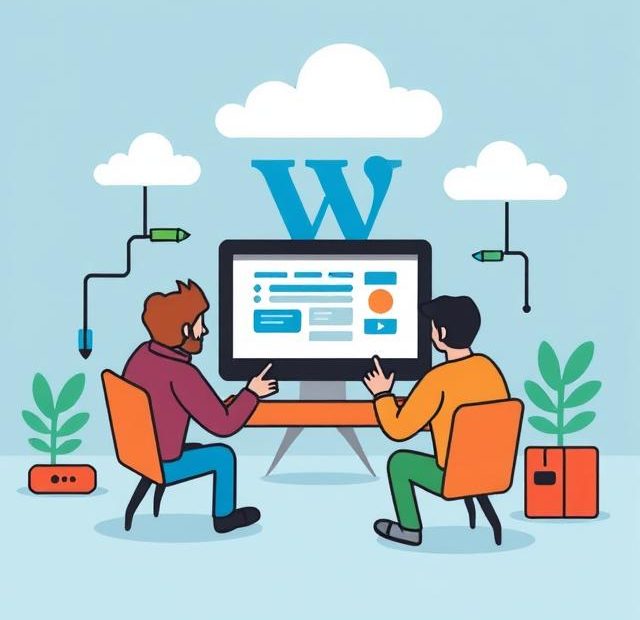With the rise of CMS platforms like WordPress and web applications built on frameworks such as Laravel or Shopify, plugin development has become a key skill for developers and digital entrepreneurs alike. Plugins let you extend existing software without modifying its core code—allowing for customization, added features, and third-party integrations.
Whether you’re looking to solve a personal problem, contribute to open-source communities, or sell on plugin marketplaces, this guide will walk you through the essentials of plugin development from a beginner’s perspective.
What Is a Plugin?
A plugin is a software component that adds specific functionality to an existing application. Rather than rewriting core systems, plugins “plug in” and extend what a system can do.
Common plugin platforms include:
-
WordPress
-
Shopify
-
WooCommerce
-
Magento
-
Joomla
-
Visual Studio Code
For example, a WordPress plugin might add a contact form or SEO optimization features to your site—without altering the core WordPress files.
Why Learn Plugin Development?
Here are some compelling reasons to get started:
-
💡 Solve your own problems: Automate tasks or enhance functionality for your site or app.
-
💰 Earn income: Sell plugins in marketplaces or offer them as part of premium services.
-
🔧 Customize tools: Tailor third-party software to fit your workflow or client needs.
-
🌍 Contribute to open source: Share your tools with a global developer community.
Step-by-Step Guide to Plugin Development
Whether you’re building for WordPress, Shopify, or any other platform, the development process follows similar principles.
Step 1: ✅ Choose Your Platform
Before writing code, select the platform for which you’re building the plugin. WordPress is a great place to start for beginners due to its large community and extensive documentation.
For this guide, we’ll reference WordPress plugin development as the example—but the concepts apply across platforms.
Step 2: ✅ Understand the Plugin Structure
A basic WordPress plugin consists of a folder and a main PHP file with a header like this:
This file tells WordPress how to register and load the plugin.
Other common files may include:
-
functions.php– Your plugin’s logic -
admin/– Admin-facing UI code -
includes/– Additional PHP functions -
assets/– CSS, JavaScript, and images
Step 3: ✅ Set Up Your Development Environment
Install:
-
A local server (e.g., XAMPP, MAMP, or LocalWP)
-
A code editor (like VS Code or Sublime Text)
-
WordPress (if building a WP plugin)
-
Git for version control
Create a folder in /wp-content/plugins/ and add your main plugin file.
Step 4: ✅ Write Basic Functionality
Let’s say you want to create a plugin that adds a “Hello World” message to your website footer:
This hook adds your message to the site’s footer. As simple as it sounds, this is the foundation of plugin development.
Step 5: ✅ Use Hooks and Filters
WordPress plugins rely heavily on actions and filters—also called hooks. These allow you to “hook into” existing code and add or change behavior.
-
Actions run custom code at specific points (e.g., after a post is published)
-
Filters modify existing data before it’s displayed (e.g., change post title)
Understanding hooks is essential for advanced plugin development.
Step 6: ✅ Add Admin Settings (Optional)
Many plugins include a settings page in the WordPress dashboard. You can register admin menus and use forms to allow users to configure the plugin.
This creates a new menu item where you can manage settings.
Step 7: ✅ Test, Debug, and Secure
Always:
-
Test across devices and browsers
-
Sanitize inputs to prevent security vulnerabilities
-
Follow platform best practices and naming conventions
Use tools like:
-
Debug Bar (WordPress)
-
Developer Console
-
PHP Code Sniffer
Step 8: ✅ Prepare for Release
Once tested, prepare your plugin for distribution:
-
Write a proper README
-
Add screenshots
-
Zip the folder for upload
-
Follow marketplace guidelines (e.g., WordPress.org, CodeCanyon)
You can also publish your plugin on GitHub and share it freely with the community.
Common Mistakes Beginners Make
-
Not using proper file structure
-
Forgetting to sanitize and validate inputs
-
Skipping documentation
-
Overloading plugins with too many features
-
Not using hooks properly
Avoid these pitfalls by starting simple and focusing on clean, modular code.
Final Thoughts
Plugin development might sound intimidating at first, but once you grasp the basics, it becomes an incredibly rewarding skill. Whether you’re enhancing your own site, solving client problems, or launching a commercial product, plugins give you creative and functional power over any platform.
So don’t wait—pick a platform, follow this guide, and start building your first plugin today!
Also, you can learn more about WordPress Plugin here.
